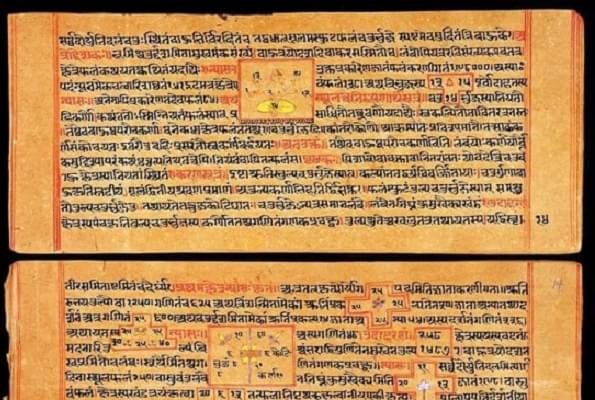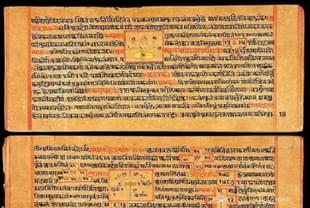Culture
Uttam Purush: How Bhaskaracharya's Lilavati Gives A Lesson In Pedagogy
Ashok Viswanathan
Mar 14, 2021, 06:14 PM | Updated 06:14 PM IST
Save & read from anywhere!
Bookmark stories for easy access on any device or the Swarajya app.


Many are familiar with the linguistic style of the Gita or the Vishnusaharanama which contain the term ‘uvacha’ to indicate direct speech.
The shlokas are replete with the word ‘uvacha’ for example, ‘Arjuna uvacha’, ‘Sri Bhagavan uvacha’, ‘Vyasa uancha’ and so forth which translates to- so and so said thus to so and so.
The Upanishads also use direct speech which takes the form of a dialogue between two people, usually a guru and a shishya.
For example, in the case of the Kathopanishad, the discussion is between Yamadharmaraja and Nachiketa.
The use of direct speech between two people in first person (I/we) and second person (you) is the method that the shastra uses to teach.
Such use of direct speech in the form of a dialogue in the shastras can be viewed as an effective tool to teach according to Swami Dayananda Saraswati, whose recording on the subject I happened to listen to recently.
In English, we have points of view in speech or writing, which can be expressed in first person, second person or third person. First person is the I or we perspective, while the second person is the ‘you’ perspective and the third person is the she/he/they/it perspective.
In Sanskrit, like in English, there are also three points of view in speech — the first person (uttama purusha), second person (madhyama purusha) and third person (prathama purusha).
While in the western system, writing in third person is the standard for academic papers, the shastra rarely uses the third person in its sentence structure.
According to Swami Dayananda Saraswati, the deliberate pedagogical choice of using direct speech employing first and second person (I and you) in a sentence structure brings the subject matter to life for the listener. This form of a dialogue can be seen in the Gita, the Itihaasas, and the Puranas.
The use of such direct speech makes the listener feel that the teaching is tailored for him, and he is the one actually being addressed. Each seeker of knowledge feels that ‘I am being addressed’ which makes the listener alert resulting in effective knowledge transfer.
The shastras are very deliberate in using the appropriate forms of speech and pay close attention to these subtleties in the delivery of knowledge in the guru shishya parampara chain of knowledge transfer.
This form of direct speech via dialogue between guru and shishya, where Bhaskaracharya is the guru and his daughter is the shishya, can also be seen in the Ganitam text Līlāvatī.
Līlāvatī chronicles the teachings of Bhaskaracharya to his young daughter Līlāvatī, after whom the book is named.
This text demonstrates not only the many techniques employed in math education in ancient India but also the lofty standards of math education for young girls.
Līlāvatī is not simply a guide for learning mathematics — it is just as much a guide for teachers on how to properly communicate with students.
Līlāvatī is known for the beautiful metrical verses and an offering of multiple methods to choose from to solve problems. Interestingly, the use of direct speech using first person and second person is also the linguistic style of Līlāvatī.
The following example demonstrates how Bhaskaracharya communicates with his ward, Līlāvatī:
बाले बालकुरङ्गलोलनयने लीलावति प्रोच्यतां….. कल्याणिनि
:- बाले- O young कल्याणिनि- auspicious one लोल नयने- who has restless eyes बाल-like that of a young कुरङ्ग –deer लीलावति- Oh Līlāvatī प्रोच्यताम् -then tell (me)
In this example, one can see the way he addresses his daughter to elicit an answer, which can be used as guide for a teacher. Here, her eye movements show her curiosity and intelligence. Using these encouraging words, Bhaskaracharya in essence, is making the student involved in the process.
In another example:
सखे नवानां च चतुर्दशानां ब्रूहि त्रिहीनस्य शतत्रयस्य ।
सखे- O my friend! (यदि)-if जानासि-know वर्गविधानमार्गम्-the method of finding squares चेत्-then, (तर्ही)- therefore ब्रूहि-tell me
Here again, one can see that Bhaskaracharya does not directly say “tell me the answer”, rather says “If you know the answer, then answer me, oh dear one!”.
There is a certain care, subtlety and sensitivity in the way he communicates to the student.
This way of teaching Ganitam via dialogue is indeed unique to the Indian system. The student of Ganitam, reading this text feels that Bhaskaracharya is indeed addressing him/her specifically in an endearing manner, boosting confidence in the student and thus empowering him or her.
Maybe a deeper look into the shastras may give us greater insights into pedagogy in general.
We look to shastras for ideas, but seldom do we look to shastras to learn about methods to convey ideas and communicate the subject matter at hand in the knowledge transfer process.
Līlāvatī of Bhaskaracharya gives us some insights that are worth taking a closer look. These ideas are after all very relevant in the modern context.





